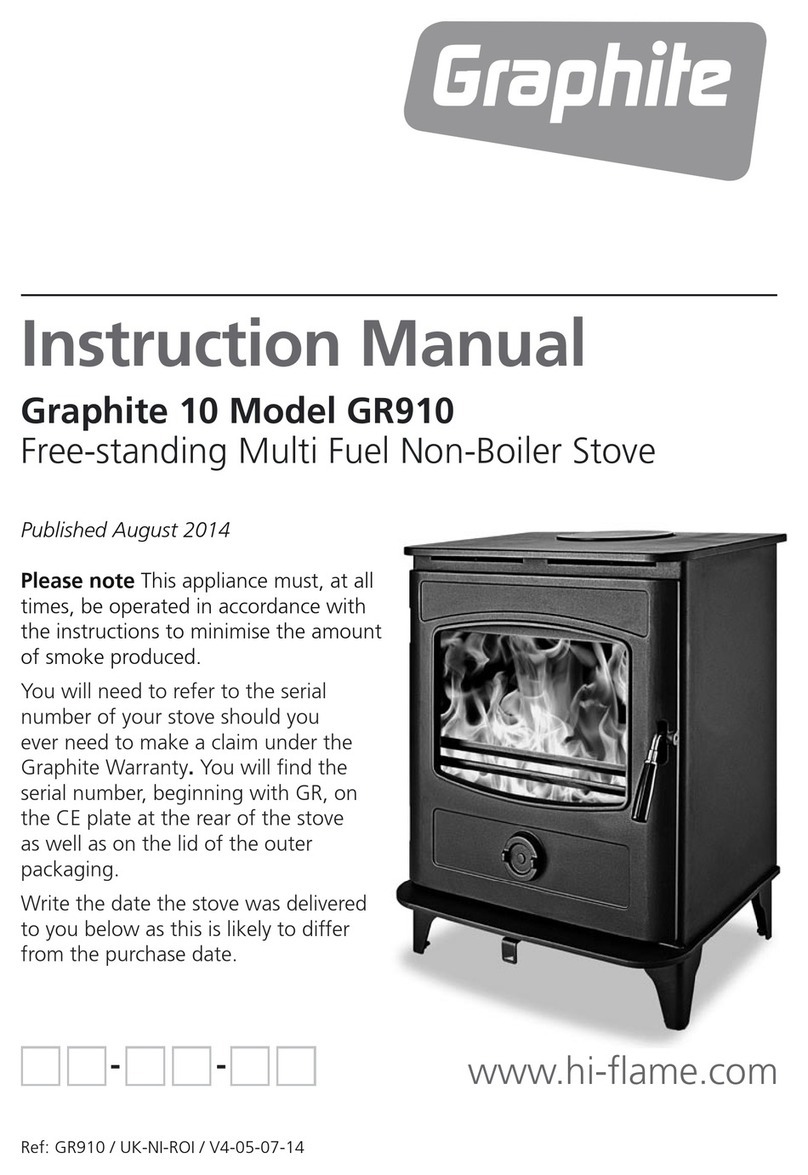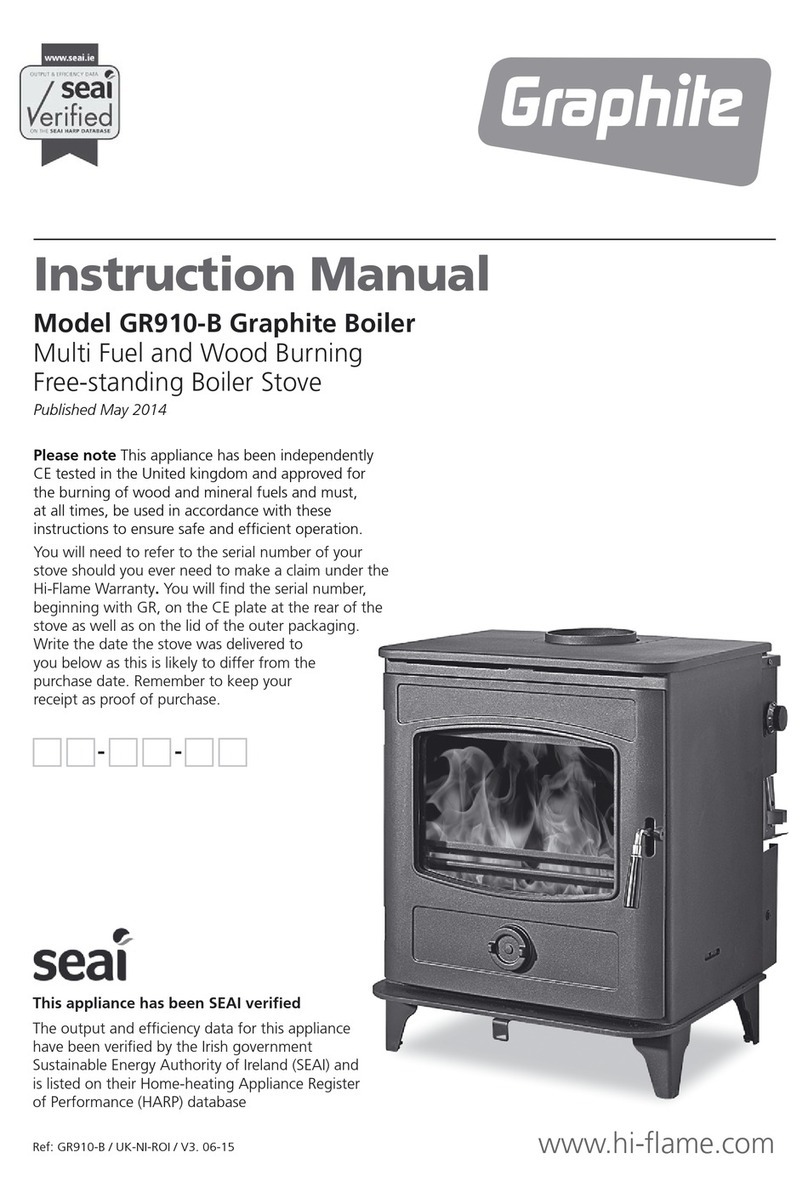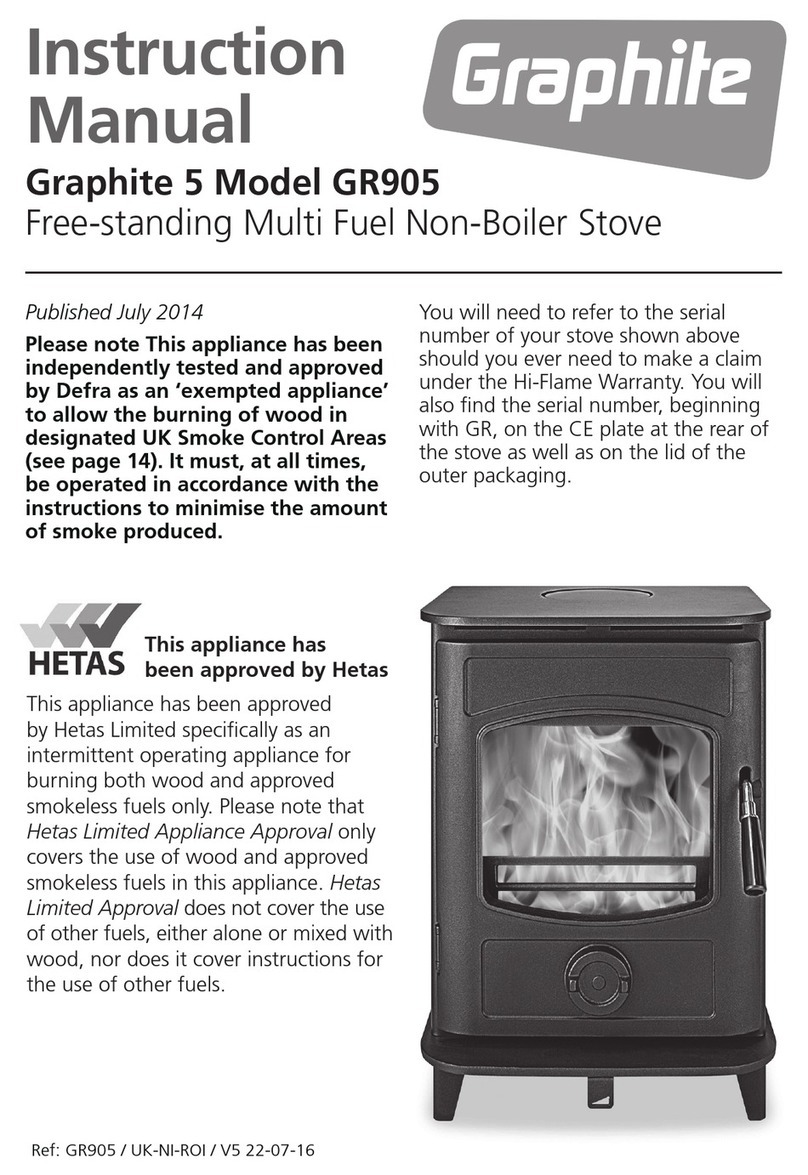
• To ensure your safety make sure that
your stove’s installation complies with
all local building regulations’ ventilation
requirements. Low energy houses have
their own particular requirements and
these should be strictly adhered to.
• Do not use flammable liquids to ignite
the fire. In the confined space of the
firechamber there is a real potential to
cause a life-threatening flash flame or
explosion.
• Never over-fire the stove. If any
external parts of your stove glow red
during operation then immediate action
should be taken to reduce the supply
of air to the firechamber through the
Primary and Secondary air controls
which should quickly limit the intensity
of the fire.
• This stove is CE approved and tested
to EU EN13240 standards in the United
Kingdom by Kiwa GasTec (www.kiwa.
co.uk). Alterations to its construction
could be potentially dangerous and will
also render your product warranty void.
• Do not use aerosol products in the
vicinity of the stove when it is in use.
• Check and clean the stove’s flue way
and the top of baffle plate regularly
to help avoid potential blockages (see
pages 9, 33 and 34).
• Clean your chimney regularly (see
page 34).
For more information on stove
safety please visit
www.stovesafetyfirst.com
8
IMPORTANT SAFETY ADVICE
• Ensure that an approved carbon
monoxide detector (BS EN50291:2001)
is fitted in the same room as the stove.
It should be powered by a battery
designed for the working life of the
alarm. Please note that since October
2010 this is now a requirement under
UK Building Regulations.
• External surfaces including the fire-
chamber door and operating handles,
windows, flue pipes and stove
bodywork will become extremely hot.
Always use the tool provided and avoid
touching these parts of the stove
without proper protection, such as heat
resistant gloves or other protective aids.
• Potentially combustible material or
objects such as soft furnishings should
never be left on or near any of the
stove’s hot surfaces. Ensure that wood
supplies and log baskets are kept at a
safe distance from the stove.
• Never leave children unattended in
the room where your stove is being
operated. Ensure that children are
aware of the potential danger and
make sure that they keep clear of the
stove when it is in operation. Where
children, the elderly or the infirm are
present always use an approved safety
fireguard (BS6539) to prevent
accidental contact with the stove.
• This stove should not be fitted in a
room with an extractor fan (eg kitchen)
as this will adversely affect the air
quality in the room and could be
dangerous for the room’s occupants. It
will also starve the stove of combustion
air and reduce the stove’s efficiency.































